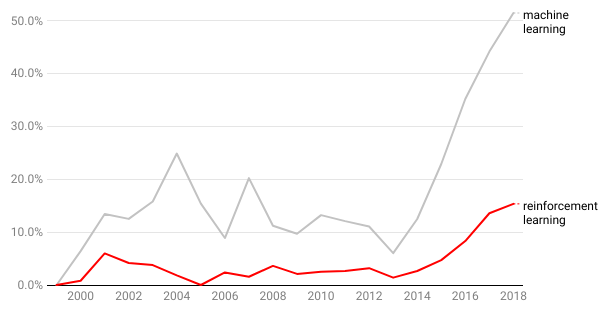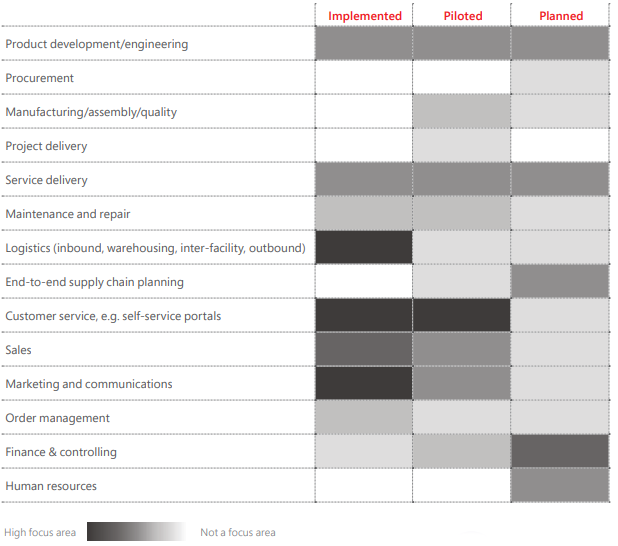Over the past year AI had been the hottest topic among developers. MIT Technology Review research points to 2008, about 20 years ago, that machine learning started picking up pace. Google Trend shows that starting from May 2014,there is a steady upward trend of searches for machine learning and AI in general.

The research of 25 years of artificial intelligence reveals that:
Through our analysis, we found three major trends: a shift toward machine learning during the late 1990s and early 2000s, a rise in the popularity of neural networks beginning in the early 2010s, and growth in reinforcement learning in the past few years.

Today, thanks to Deep Learning, AI now powers many of the technologies we love today, such as Netflix's recommendation queue, Google's natural language processing feature, and even Tesla's self driving cars.
Fear of AI Winter
However, tech blogs and think tanks are warning that the fervor is dying down and the next AI winter is coming soon. When the hype is over, when people find out machine learning is just statistics in disguise, further development of AI will die down as well.
But, this isn't the first time we have experienced the AI winter. TechTalks explains:
The first AI winter started in early 1970s, a little more than a decade after the term artificial intelligence was coined. At the time, leading scientists in the field had made all sorts of promises that super-efficient AI was just around the corner. The thinking went that AI would soon outmatch humans in checkers and chess and automate translations of written text in different languages was. None of those promises materialized until decades later. AI beat the world chess champion in 1997. Even now, machine translation is still struggling to perform on par with human translators.
Finland Is Ready To Nurture AI
Finland has prepared to embrace this new technology. In May 2017, Finland's Minister of Economic Affairs Mika Lintilä started an Artificial Intelligence Programme, led by former President of Nokia Pekka Ala-Pietilä.
In their report, they propose 8 ways to adopt AI into everyday Finnish life:
- Enhancement of business competitiveness through the use of AI
- Effective utilization of data in all sectors
- Ensure AI can be adopted more quickly and easily
- Ensure top-level expertise and attract top experts
- Make bold decisions and investments
- Build the world’s best public services
- Establish new models for collaboration
- Make Finland a front runner in the age of AI
Technology companies in Finland believe that now is just the beginning. In a few years, the technology will stabilize and become an everyday item we won't think twice about.
They argue that the current dip in interest is due to the confusion between machine learning and general artificial intelligence, but soon it will level out.

The current hype around artificial intelligence creates confusion and biases for the people. More emphasis should be put on building awareness on what AI really is and what it is not. - Jokke Ruokolainen, Uncovering AI in Finland
Finland AI Business Programme
Starting January 2018, the Finnish government is offering a total of €160 million in the next 4 years to Finnish businesses to spearhead the AI adoption. Some of the largest companies in Finland such as Elisa, Kone, and OP has started to incorporate AI into their daily operations.

As of 2019, machine learning has improved voice recognition significantly that we're now able to interface with technology just by talking. Amazon Echo, Google Home, has revolutionized the way we consume information.
Will the chase for true AI slow down in the coming years, that remains to be seen. At least I hope not.